
The Baltimore Orioles are a professional baseball team based in Baltimore, Maryland, and are a member of Major League Baseball’s American League (AL) East division. Founded in 1901, the Orioles are one of the oldest and most storied franchises in baseball. Known for their rich history, passionate fanbase, and iconic players, the Orioles have won three World Series titles (1966, 1970, and 1983) and have remained a central figure in the city’s sports culture. The Orioles have developed a reputation for a strong farm system, legendary players, and a distinct team culture.
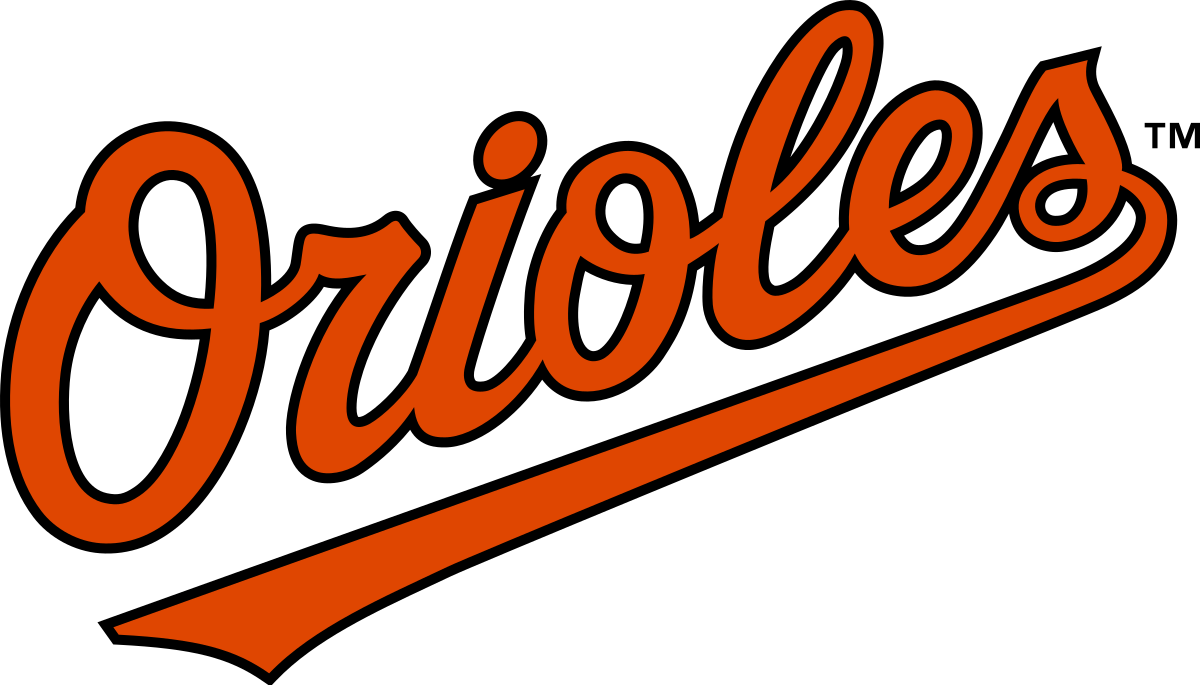
The Orioles’ team colours of orange, black, and white are instantly recognizable and reflect the team's identity. Orange symbolizes energy, passion, and strength, while black evokes the toughness of the team and its defensive prowess. These colours are deeply rooted in the history of Baltimore, often representing the Baltimore Orioles’ connection to the city and its working-class culture. The team’s logo, featuring an image of a smiling bird, has undergone several redesigns over the years but remains iconic in the world of baseball. The branding ties back to the team’s longstanding tradition while also embracing modern design elements that appeal to new generations of fans.

The Orioles’ culture has been one of resilience, development, and community engagement. Historically, the team has had a focus on building from within, developing homegrown talent through their farm system, and focusing on scouting and player development. The team is known for its strong emphasis on pitching, particularly the development of young arms. This philosophy has shaped the team’s identity, with players like Jim Palmer, Mike Mussina, and Kevin Gausman leading the way in the rotation over the years.
The culture of the Orioles also embodies a sense of blue-collar work ethic. Fans and players alike take pride in the team’s gritty style of play, especially on the defensive side of the ball. Whether in a rebuilding phase or contending for a playoff spot, the Orioles have maintained a sense of community spirit and team-first mentality, both on and off the field.

The Orioles enjoy a dedicated fanbase, particularly in Baltimore and the greater Maryland region. Orioles fans are known for their loyalty, with Oriole Park at Camden Yards serving as the team’s home and being one of the most fan-friendly ballparks in Major League Baseball. The team has a strong community presence, engaging with fans through charity events, youth programs, and special promotions. The Baltimore Orioles’ fans are often described as passionate and enthusiastic, frequently filling the stadium even during difficult seasons. Their connection to the team has been forged over decades of exciting baseball, particularly in the 1960s, 1970s, and 1980s when the Orioles enjoyed sustained success.
The fanbase has also shown remarkable resilience, especially after the team endured years of rebuilding and underperformance in the 2010s. Despite this, the loyal support of the Baltimore community has remained unwavering, and the team’s fanbase continues to thrive with a sense of optimism for the future as the Orioles emerge from their rebuild.
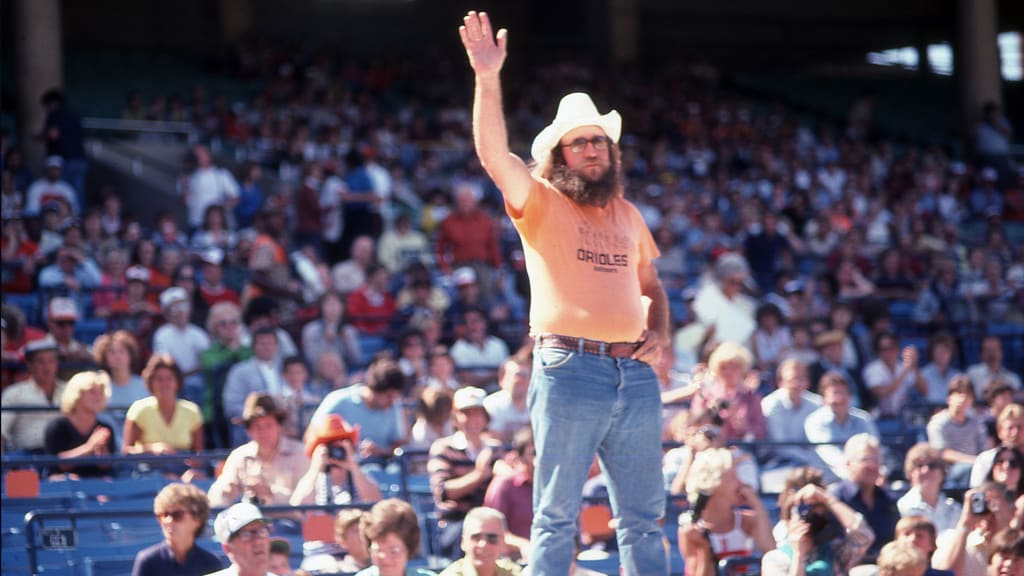
The Orioles play their home games at Oriole Park at Camden Yards, a state-of-the-art baseball stadium that opened in 1992. Camden Yards is one of the most renowned ballparks in Major League Baseball, known for its retro-modern design and fan experience. The stadium features unique elements such as the brick exterior and the Eutaw Street promenade, which runs alongside the stadium and is a fan-favorite spot for pre-game activities. Camden Yards is also famous for its outfield wall, which features a warehouse that sits beyond the right-field fence and is a recognizable feature of the stadium.
With a seating capacity of 45,000, Camden Yards has become an iconic destination for baseball fans. It is located in downtown Baltimore, making it central to the city’s cultural and entertainment scene. The park is known for being incredibly fan-friendly, with interactive zones, food options, and opportunities for fans to get involved with the team, making it a top destination for Orioles fans both near and far.
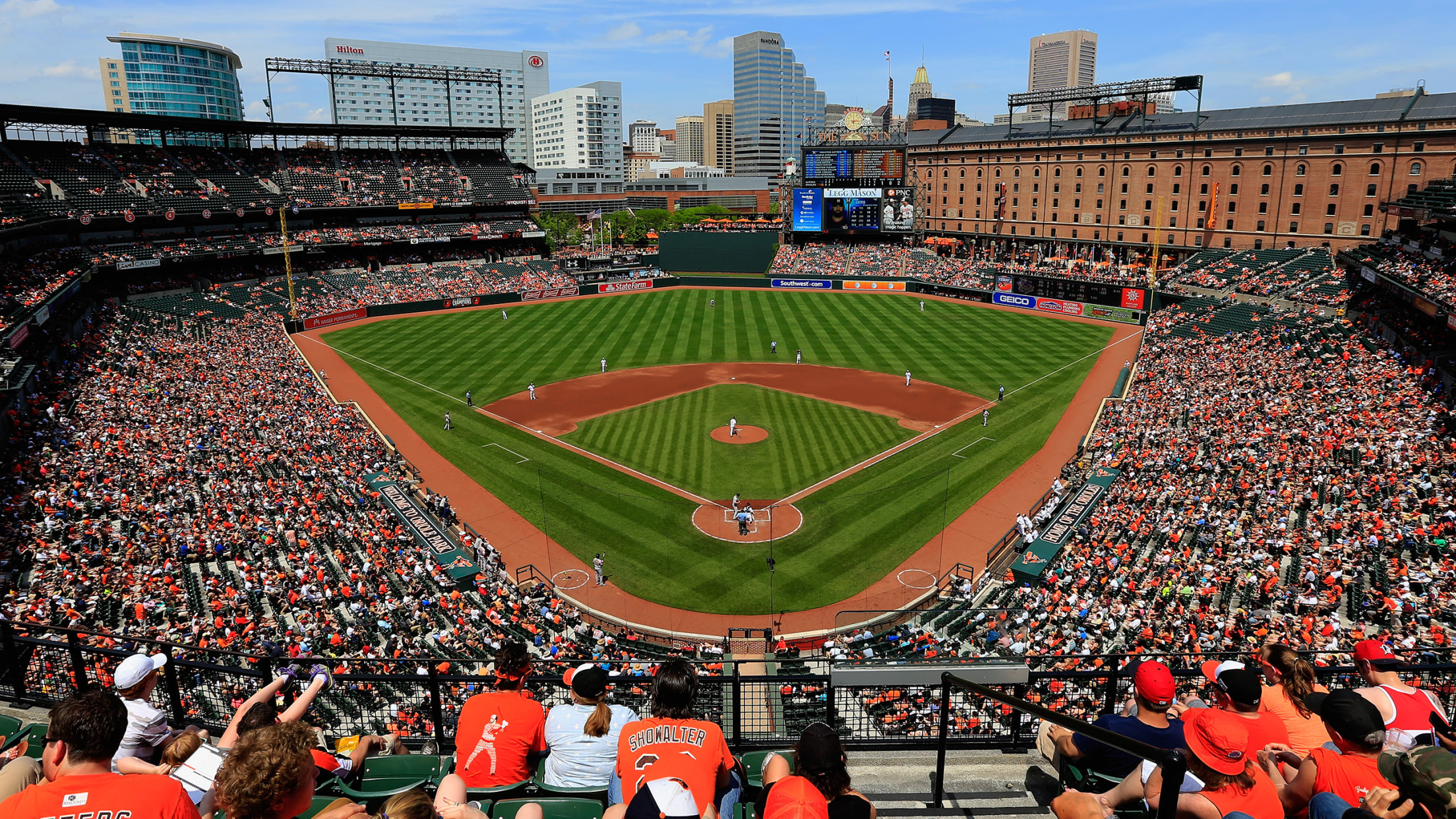
The Orioles have several key rivalries, particularly within their division in the American League East. The most prominent rivalry is with the Washington Nationals, due to the proximity of the two teams and the Battle of the Beltway moniker. This rivalry has grown in recent years as both teams have become contenders in their respective years, making for intense matchups.
Another significant rivalry is with the Boston Red Sox, who have had decades of competition with the Orioles in the AL East. The rivalry with the New York Yankees has also been historically intense, particularly as both teams are among the most storied in MLB history. The Orioles’ rivalry with the Tampa Bay Rays has grown in recent years due to both teams being in similar phases of rebuilding, and the division games are always competitive.
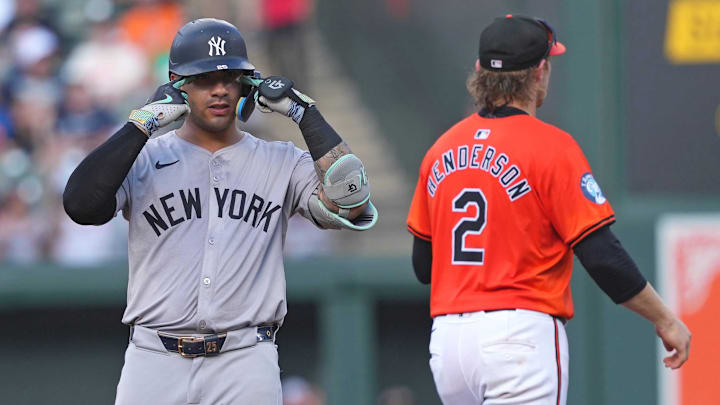
The Baltimore Orioles have been home to many of baseball’s greats, with Hall of Famers like Brooks Robinson, Cal Ripken Jr., Eddie Murray, and Jim Palmer being integral to the team’s legacy. Ripken, perhaps the most iconic Oriole, is best known for his consecutive games streak, which set the record for most consecutive games played (2,632) in MLB history.
Other notable figures in the Orioles’ history include Frank Robinson, who was the first player to win the MVP in both leagues (National and American), Jim Palmer, a three-time Cy Young Award winner, and Manny Machado, one of the best third basemen of his generation.
The 1990s were marked by solid performances from players like B.J. Surhoff and Mike Mussina, while the team’s success in the 2010s centered around stars like Adam Jones and Chris Davis. The team’s focus on homegrown talent and player development has always been a defining characteristic of the franchise, with a steady stream of players coming through the system and contributing to the team’s success.

The Orioles entered a rebuilding phase after several years of competitive play in the 2010s, culminating in their AL East championship in 2014. However, by the late 2010s, the team began a rebuild, focusing on player development and long-term success. Under the leadership of Mike Elias, the team has embraced a modern, analytics-driven approach to building a competitive roster. Key prospects such as Adley Rutschman, Gunnar Henderson, and Grayson Rodriguez are expected to lead the team into the future and potentially bring the Orioles back into contention for division titles and playoffs in the years to come.

The Baltimore Orioles were one of the founding members of the American League (AL), established in 1901. The team’s early years were marked by struggles to establish a strong identity in Major League Baseball. Originally part of the AL’s Eastern Division, the Orioles struggled to find success, particularly in their early years when the team was one of the lesser-known franchises in the league. Despite this, they began to establish a loyal fan base in Baltimore, which would later become a hallmark of their identity.
The team's first major success came in 1901, when they finished in fourth place in the American League. The Orioles’ early roster included Hall of Famer John McGraw, who would go on to become one of the most influential managers in baseball history. McGraw’s leadership helped build a foundation for the team, even though they didn’t capture a championship during his time. The Orioles, however, began to make their mark in the league, and this era set the stage for their future successes.

By the 1950s, the Orioles were going through ownership changes and an overall period of flux. This resulted in the team’s relocation from St. Louis to Baltimore in 1954. The move to Baltimore heralded a new beginning for the franchise, which was then renamed the Baltimore Orioles. It was under new ownership that the Orioles began to transform into the powerhouse team that would dominate the American League for decades.
Despite early challenges, the team’s new ownership invested in improving the team’s roster and infrastructure. The addition of key players like Brooks Robinson, a future Hall of Famer, set the stage for the team’s future success. However, the Orioles did not immediately reach postseason success in this period, as the team was still developing.
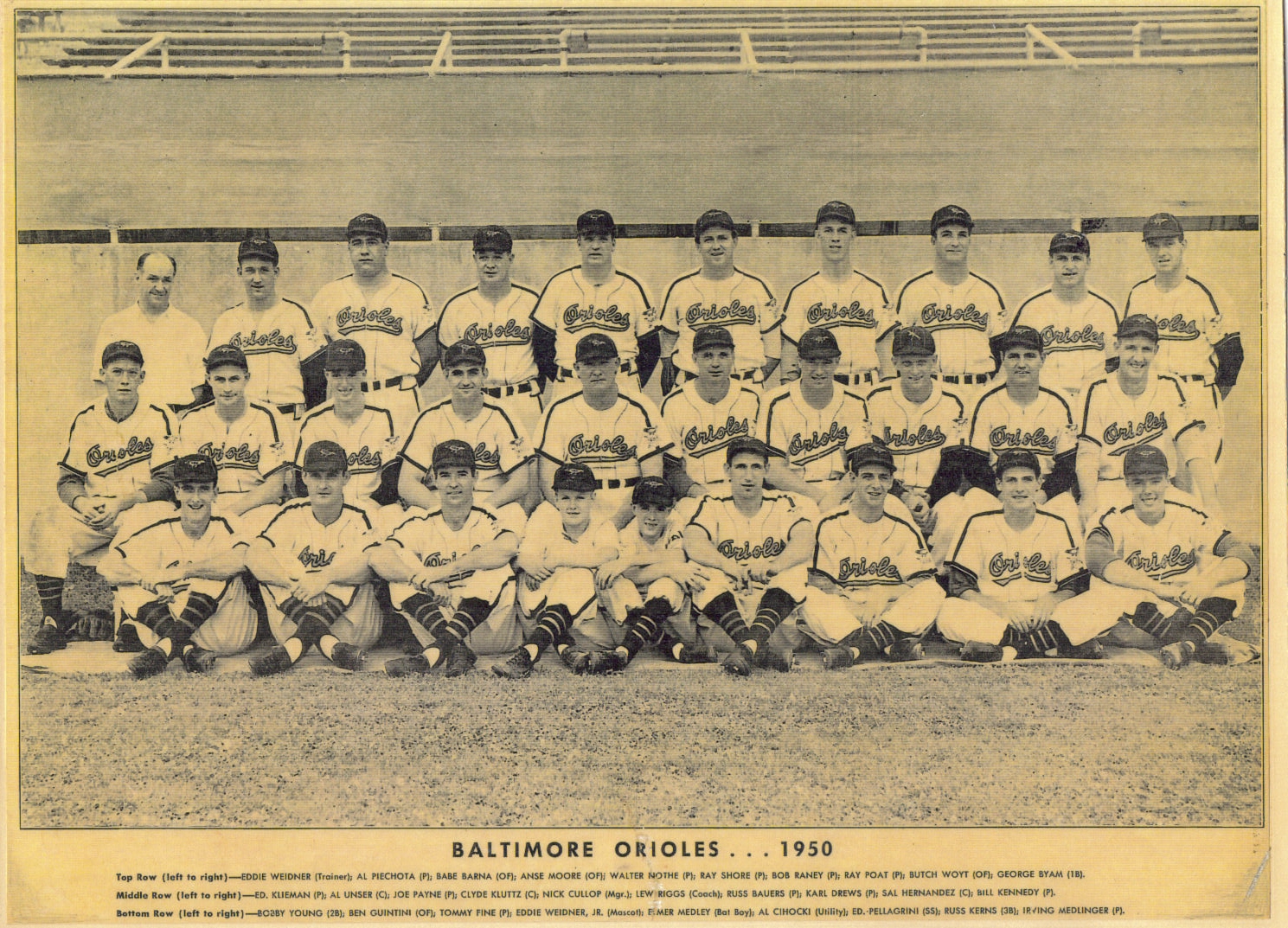
The 1960s and 1970s were the golden years for the Orioles, marked by sustained excellence and dominance in the American League. The Orioles were one of the most successful teams in MLB during this period, culminating in three World Series titles in 1966, 1970, and 1983. This era saw the rise of legendary players, including Brooks Robinson, whose exceptional defensive skills made him one of the greatest third basemen in baseball history, and Jim Palmer, a Hall of Fame pitcher and three-time Cy Young Award winner.
In 1966, the Orioles achieved their first World Series title, sweeping the Los Angeles Dodgers in 4 games. This victory marked a pivotal moment in the franchise's history and helped the team earn a reputation as a dominant force in MLB. The 1970 World Series saw the Orioles win their second championship, defeating the Cincinnati Reds in five games. Players like Frank Robinson and Boog Powell played pivotal roles in the team's success, and the Orioles became a model franchise in terms of both talent and depth.
The 1970s also saw the rise of another key figure: Earl Weaver, who took over as the Orioles' manager in 1968. Under Weaver’s leadership, the Orioles developed one of the most successful teams in baseball, emphasizing strong pitching and solid defense, both of which became hallmarks of the Orioles’ style of play.
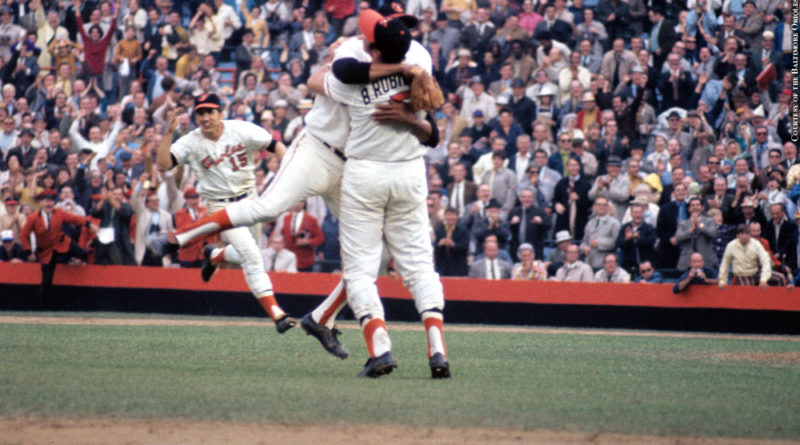
After their success in the 1970s, the 1980s were a period of transition for the Orioles. While the team had individual success, such as Cal Ripken Jr.’s debut in 1981, the team struggled to maintain the dominance it had achieved in the previous decades. The Orioles’ 1983 World Series win over the Philadelphia Phillies was the team’s third championship title but marked the last time the Orioles won a World Series in the 20th century.
The 1990s saw a period of rebuilding, with the team failing to return to the postseason until the late part of the decade. However, the franchise did boast notable players such as Rafael Palmeiro, B.J. Surhoff, and Mike Mussina during this time. The team’s lack of success in the late 1990s led to a growing frustration among fans, as the Orioles struggled to maintain competitiveness against other teams in the American League East, particularly the New York Yankees and Boston Red Sox.

The turn of the century marked a turbulent period for the Orioles, with the team going through a prolonged rebuilding phase. Despite having some prominent players like Miguel Tejada and Brian Roberts, the Orioles were unable to find consistent success on the field. They struggled in the tough American League East, with the Boston Red Sox and New York Yankees dominating the division throughout this period.
In 2006, the Orioles had their best chance at success in the 2000s, making it to the AL Wild Card race, but ultimately fell short of the postseason. The team’s performance led to a series of changes in the front office, and by 2010, the Orioles were once again in the process of rebuilding their roster and looking toward the future.

In 2011, Dan Duquette took over as the team’s general manager, and under his leadership, the Orioles began a rebuilding effort with an emphasis on analytics, young talent development, and long-term growth. The Orioles started to develop a solid core of young players, including Manny Machado, Chris Davis, and Adam Jones.
In 2012, the Orioles surprised many by making the playoffs for the first time since 1997, although they were knocked out in the AL Division Series. The 2014 season marked a return to relevance, as the Orioles won the AL East Division and made it to the AL Championship Series (ALCS) before falling short.
The 2010s were marked by several playoff appearances but also by a lack of sustained success. Despite this, the Orioles built a strong reputation for developing young talent, including the emergence of Trey Mancini, Jonathan Villar, and Cedric Mullins.
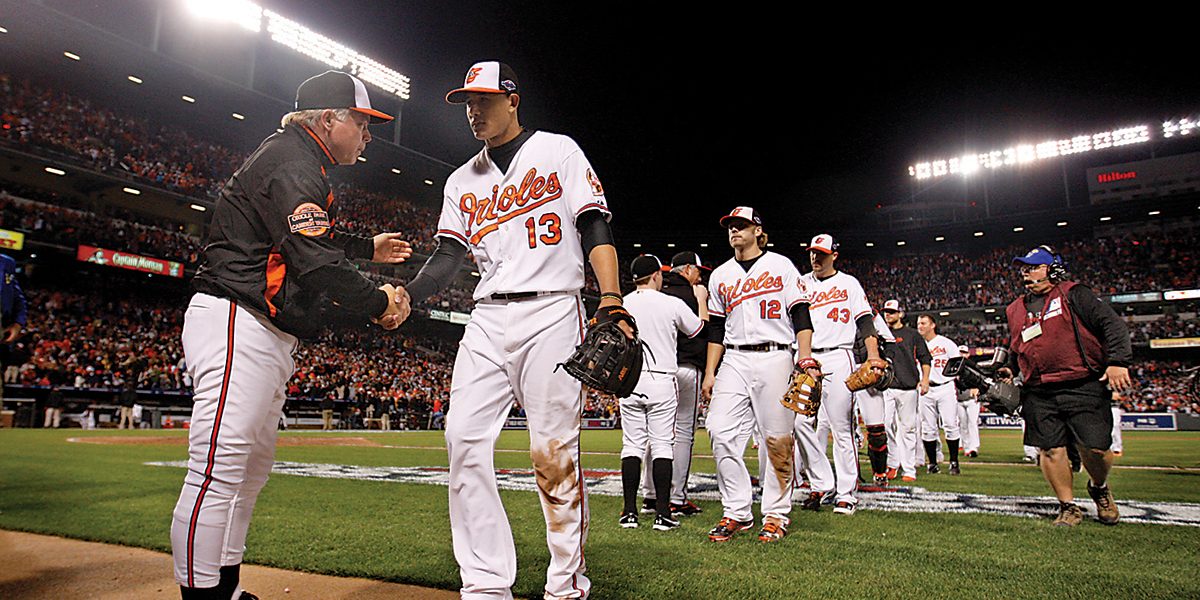
The Baltimore Orioles are owned by Peter Angelos, who acquired the team in 1993. Under Angelos’ leadership, the Orioles underwent significant changes, both in terms of performance and financial stability. Angelos is a prominent attorney and businessman, having been heavily involved in the Baltimore community. His ownership of the Orioles has been marked by both successes and frustrations, with the team enjoying a period of dominance in the 1990s and early 2000s, followed by more challenging years.
As of 2023, there have been discussions about a transition of ownership, with the Angelos family reportedly preparing to sell part or all of the team. However, Peter Angelos and his sons John and Louis still maintain primary control of the franchise. The future ownership of the team remains a point of speculation, and the ongoing situation has had an impact on the team’s overall operations, particularly in recent years.
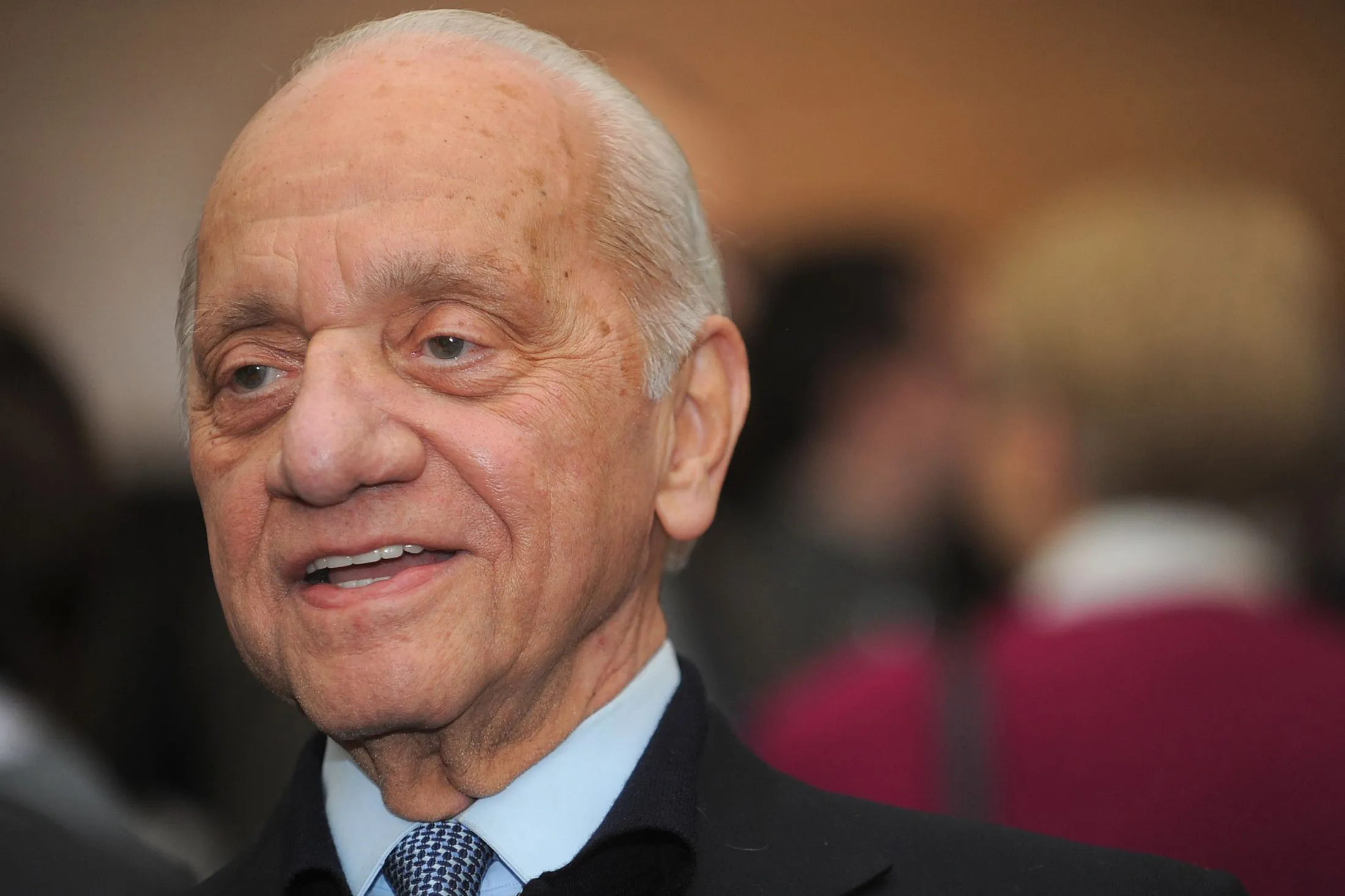
The structure of the Baltimore Orioles is hierarchical, with Peter Angelos serving as the principal owner of the team. The day-to-day operations of the team are managed by the executive team, led by the general manager and the president of baseball operations. Currently, Mike Elias serves as the executive vice president and general manager, having taken over in 2018 to help lead the team through a rebuild.
Under Elias’ leadership, the Orioles have embraced a modern, data-driven approach to baseball, focusing on player development and analytics to build a sustainable team. The structure includes several key departments such as player development, scouting, analytics, and coaching. The organizational philosophy is focused on developing homegrown talent and building the team from the inside out, particularly after the struggles of the past decade.
The business side of the Orioles is run by John and Louis Angelos, who oversee financial and marketing operations. They manage the team’s stadium operations, ticket sales, corporate sponsorships, and community outreach programs. The structure is intended to allow for both a competitive baseball product and a financially successful business.

The staff of the Baltimore Orioles is divided into key functional areas, each focused on supporting the team’s long-term success:
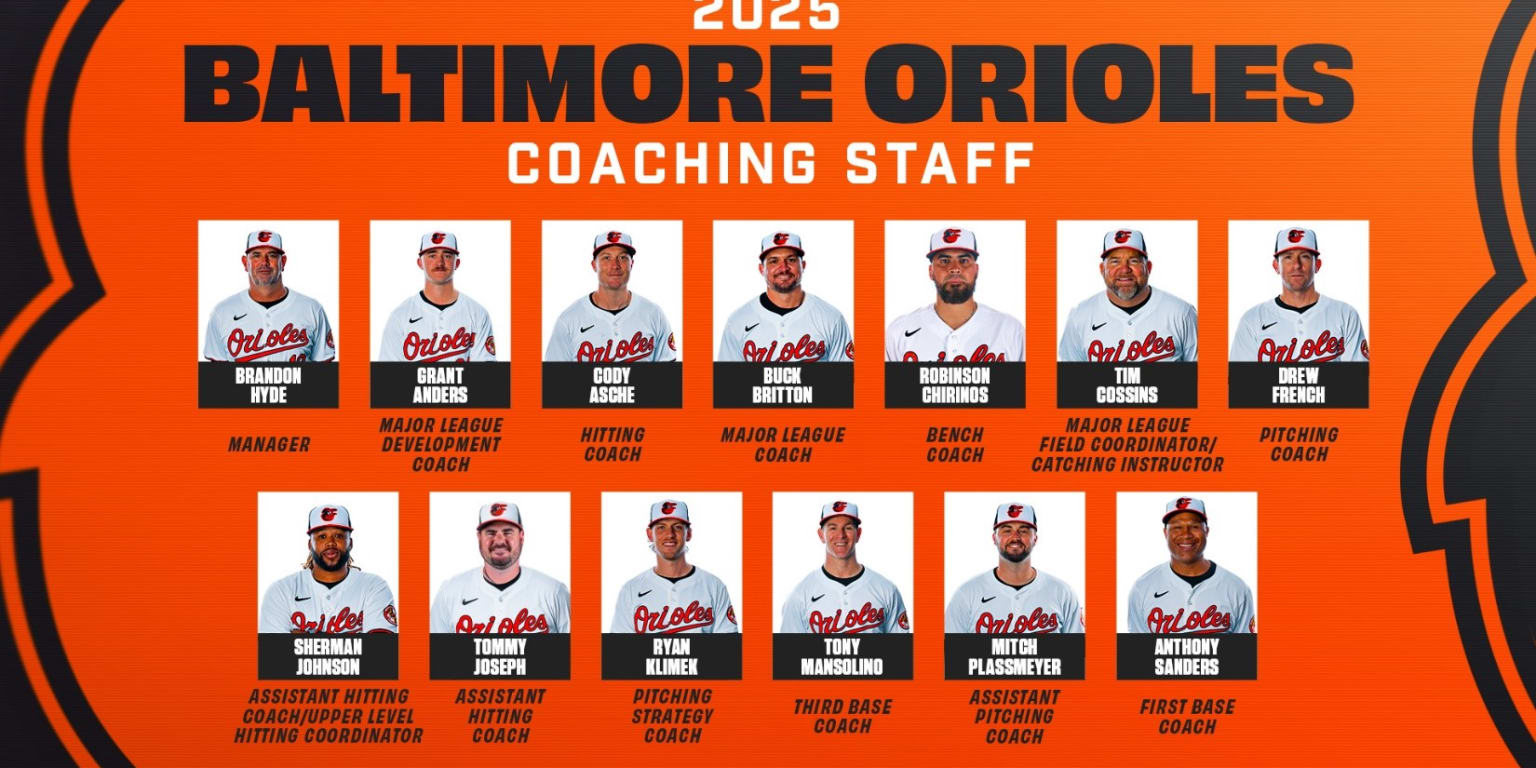
The Baltimore Orioles play their home games at Oriole Park at Camden Yards, a stadium known for its retro design and unique features. Opened in 1992, the park is widely regarded as one of the best ballparks in Major League Baseball. It has become an iconic location, blending traditional baseball aesthetics with modern amenities. Oriole Park features a stunning brick exterior, open concourses, and an outfield wall that has become symbolic of the team’s identity.
Camden Yards is also equipped with a state-of-the-art video board and a variety of fan interactive zones, making it one of the most fan-friendly stadiums in MLB. The park’s location in downtown Baltimore has made it a central part of the city’s sports culture, attracting fans from around the region.
Additionally, the Orioles have made substantial investments in their minor league facilities and spring training complex in Sarasota, Florida. This complex provides the training facilities necessary for developing young talent and preparing them for the major leagues.
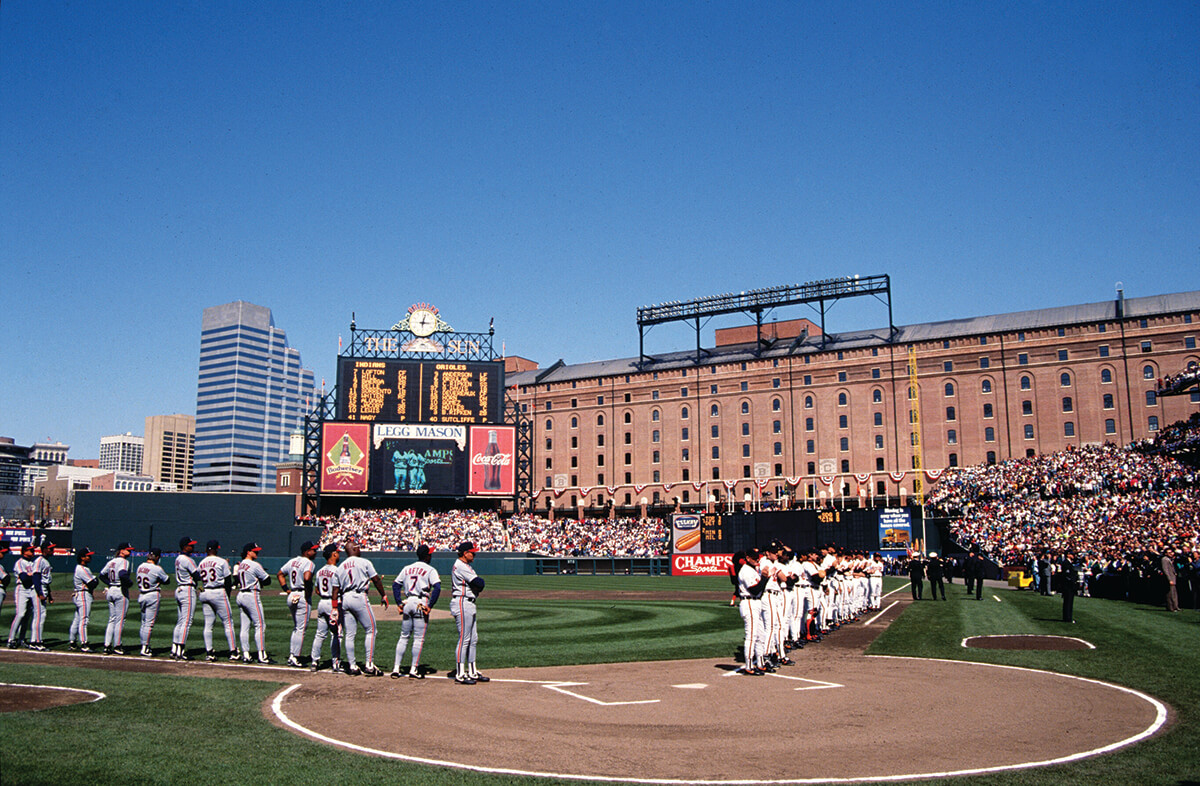
The Baltimore Orioles' finances have been closely tied to the ownership under Peter Angelos and his family, with revenue coming from ticket sales, broadcasting rights, sponsorship deals, and merchandising. While the team has had financial challenges in recent years, including periods of low payrolls and a rebuilding phase, the Orioles continue to maintain a healthy financial position.
In recent years, the team’s revenue has benefited from new media deals, increased fan attendance, and sponsorship partnerships. The Orioles' financial focus is on ensuring the team’s long-term sustainability, particularly as they rebuild and develop their young talent. Although the team is currently cost-conscious in terms of payroll, the long-term financial strategy is to invest in young talent through the draft and international signings, which can lead to future competitiveness without the need for large free-agent contracts.

The future outlook for the Baltimore Orioles is promising. The team is currently in the midst of a rebuilding phase focused on developing young talent through their farm system. With prospects like Adley Rutschman, Gunnar Henderson, and Grayson Rodriguez, the Orioles are building a strong foundation for future playoff contention.
Under the leadership of Mike Elias, the Orioles have embraced analytics and data-driven decision-making to help guide their team-building strategy. The focus on player development has already shown results, with the team’s minor league system ranked among the best in baseball. As the team continues to develop these players and integrate them into the major league roster, the Orioles are expected to become a strong competitor in the American League East once again.
Financially, the Orioles are expected to stabilize as the rebuild progresses and the team begins to contend for division titles and postseason appearances. The ownership remains committed to maintaining financial sustainability while also positioning the team for long-term success.
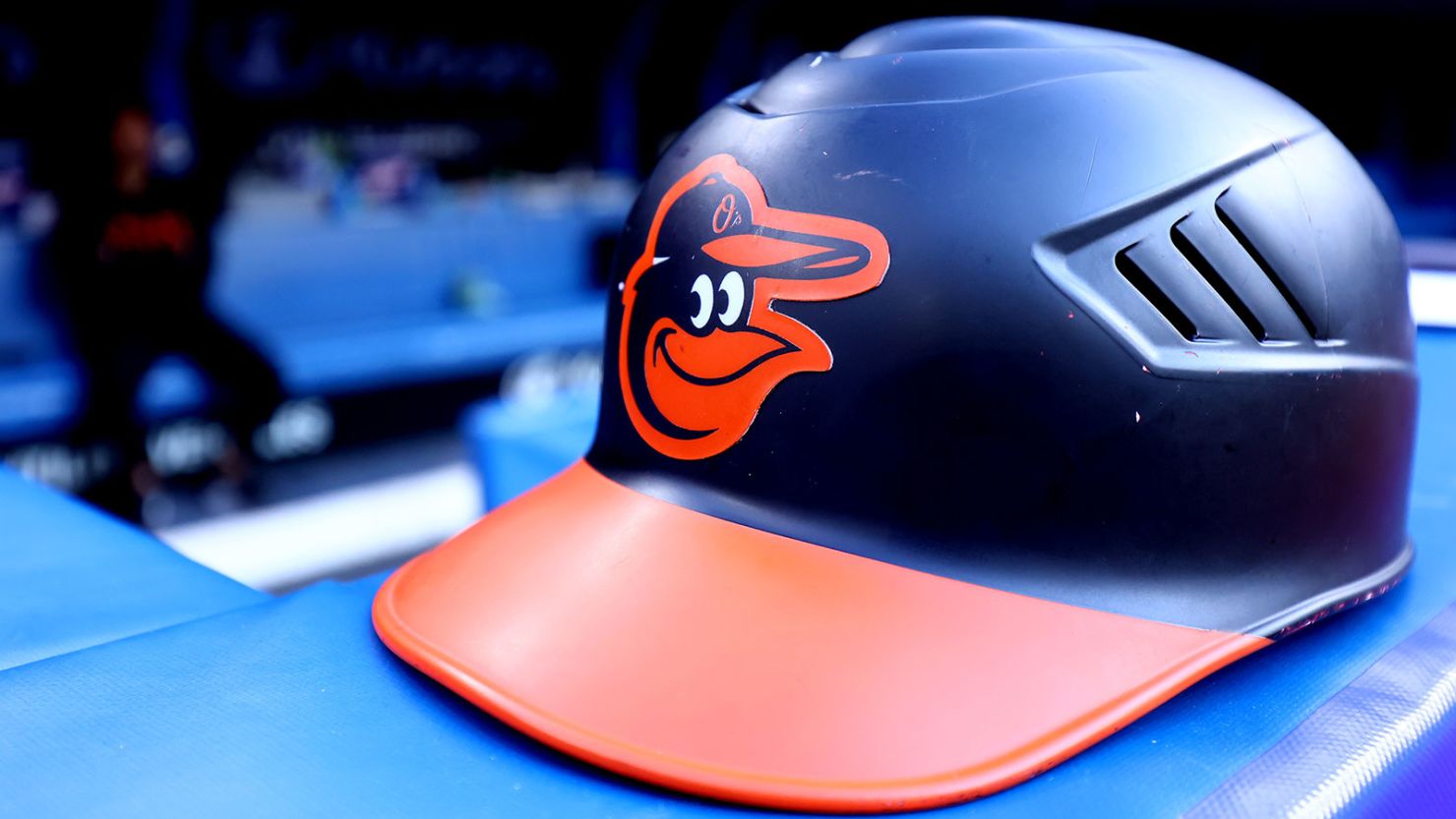
Books
Websites
Articles
Interviews and Documentaries


Becoming a leading global provider of digital solutions and services for the sports industry, enabling our clients to achieve their goals and reach their full potential.
We aspire to be a trusted partner and advisor to our clients, leveraging our expertise and passion for sports to help them succeed in a rapidly changing market.






